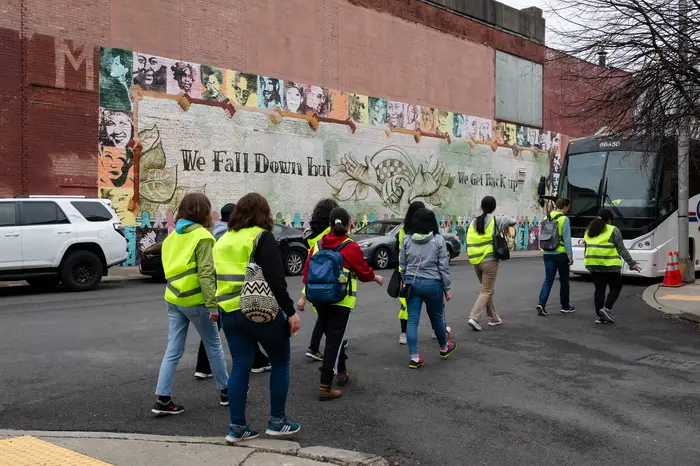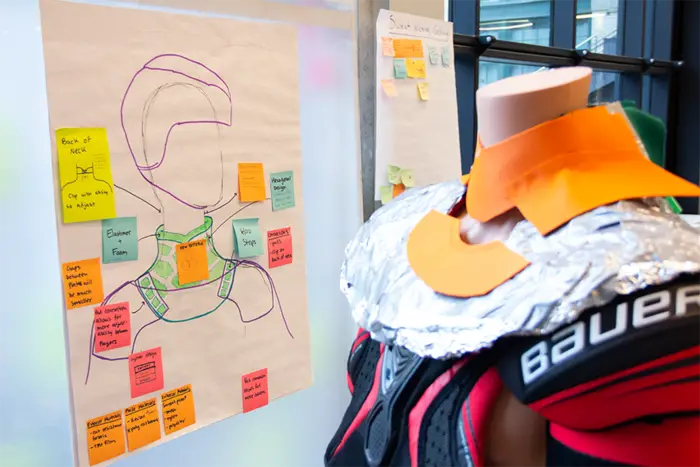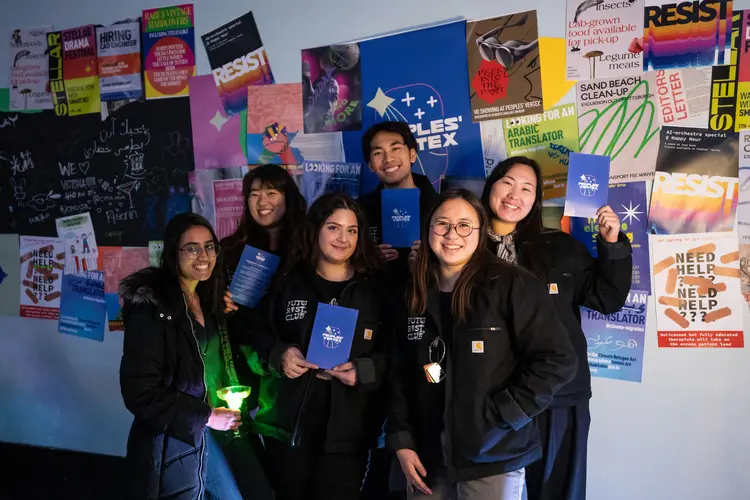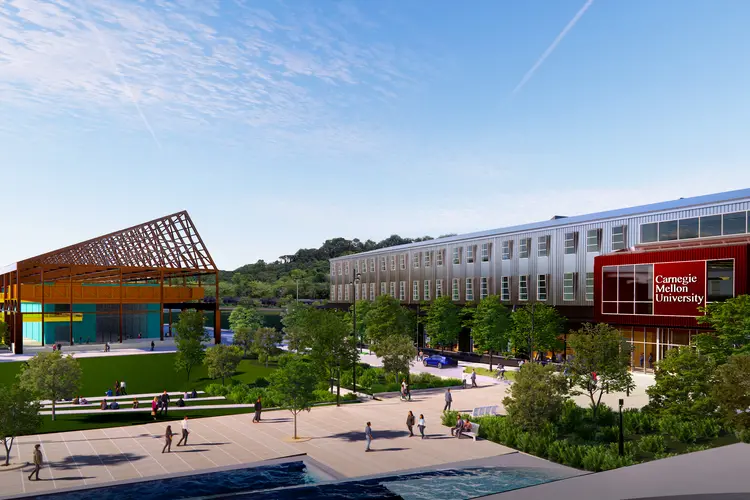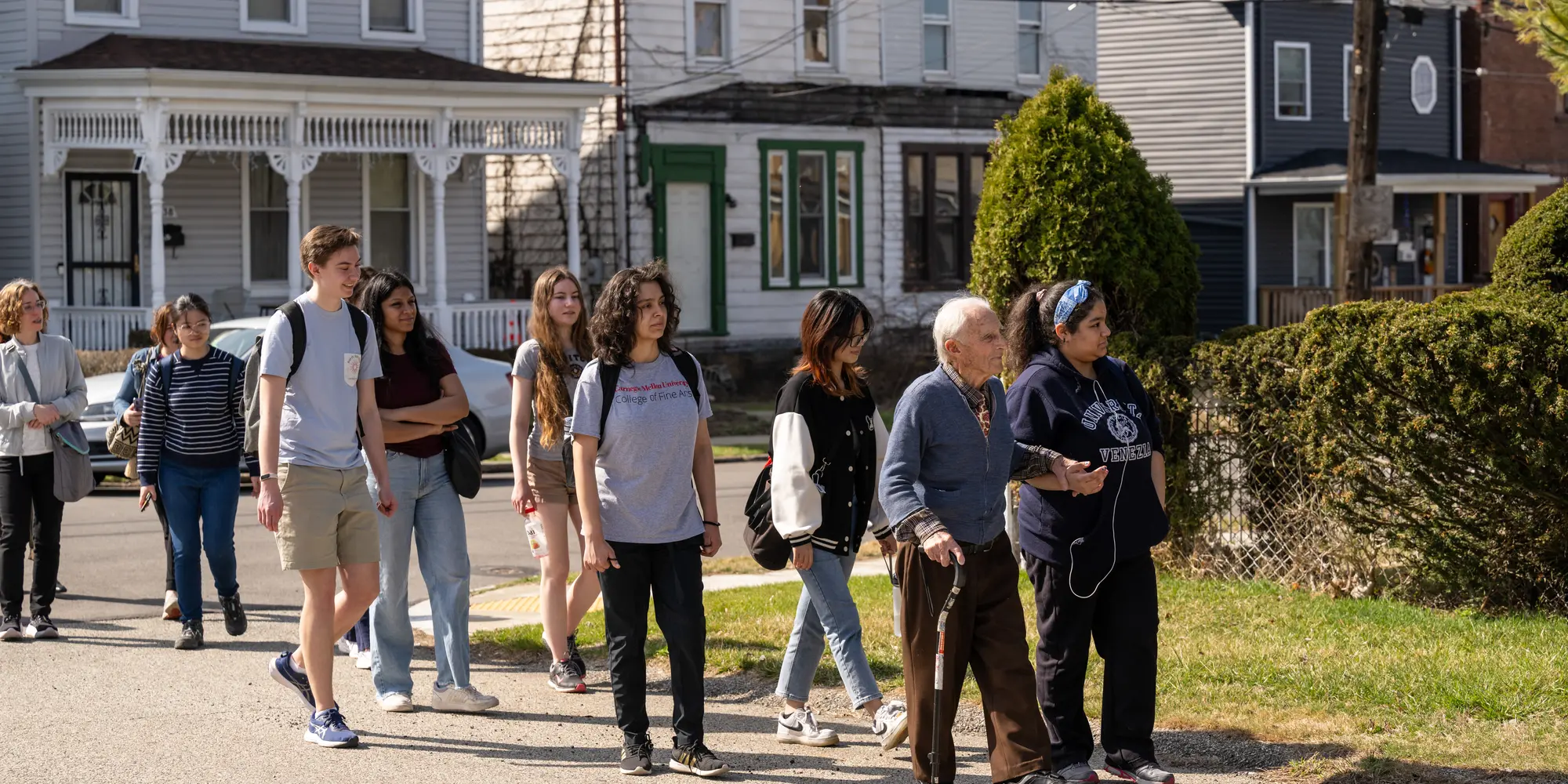
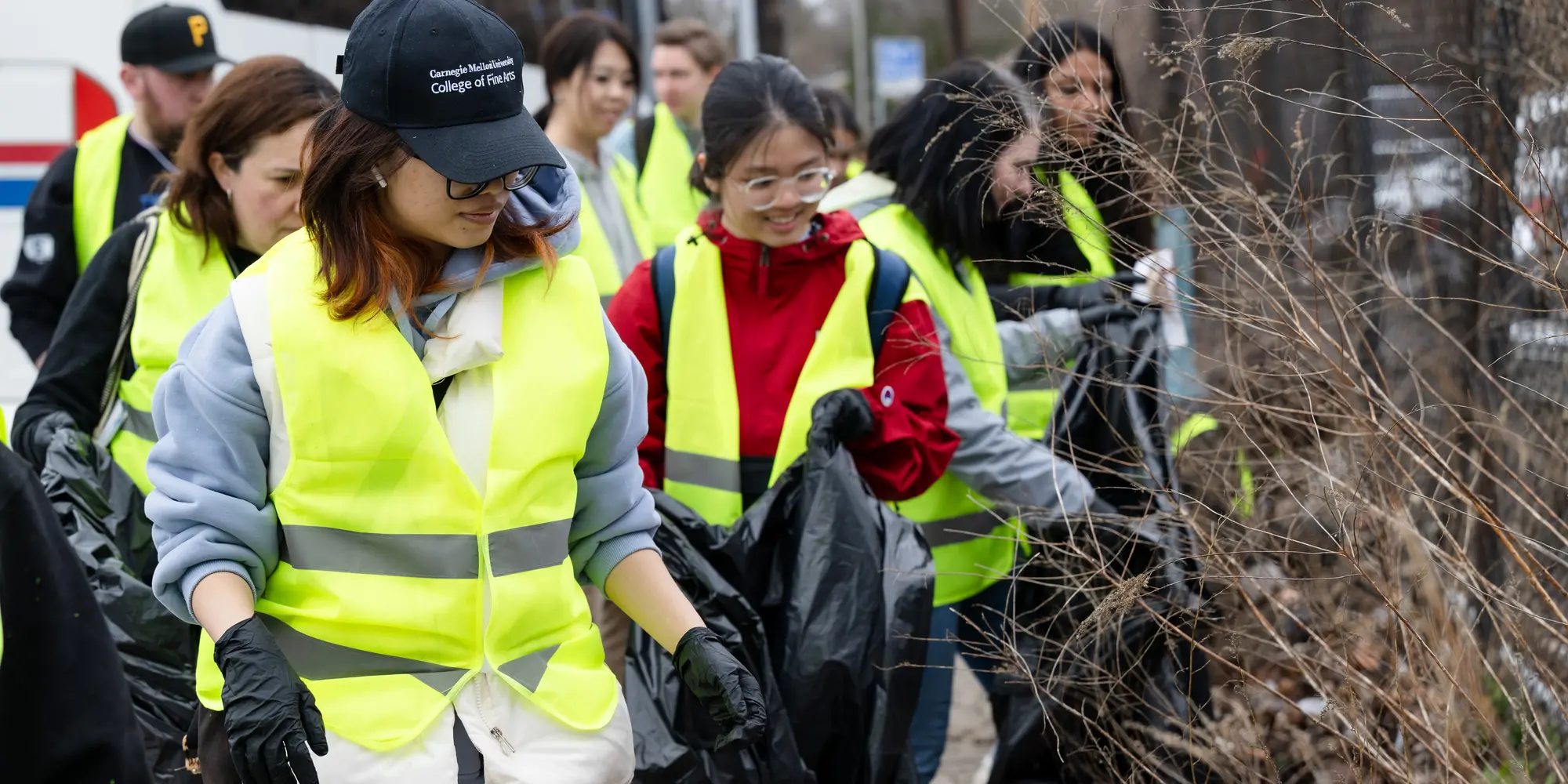
Students Engage with Larimer Neighborhood in Alternative to Spring Break
Media Inquiries
For some Carnegie Mellon University students, the learning doesn't stop when classes pause for spring break.
Pittsburgh Alternative Break(opens in new window) is a week-long program sponsored by SLICE (Student Leadership, Involvement and Civic Engagement) designed to give CMU students a more in-depth look at social issues impacting the city through hands-on service projects, reflective learning and cultural experiences. This year’s focus was the neighborhood of Larimer, where the students participated in discussions related to community development and how to engage communities in transformational change.
“My friends were traveling to different cities in the U.S., but my preference was to stay in Pittsburgh and get a better understanding for what the people are like beyond campus,” said Tra Bui, one of a group of students from CMU Qatar who are here for the spring semester. “I also thought it might be an opportunity to meet and share experiences with more service-minded people like myself.”
John Peña(opens in new window), adjunct professor of art at CMU, was invited to speak to this year’s cohort regarding his extensive work in the neighborhood, specifically his work with the Larimer Senior Group(opens in new window).
Peña explained how he spent the first phase of that project recording the personal stories of long-term residents in 2016. He began with one-on-one interviews where each participant was paid $25 for 30 minutes. From there, Peña began working primarily with senior residents to collectively build an informal history of the neighborhood.
"John’s approach showcased for our students the best practices in community building and organizing." — Meggan Lloyd
Bui had never heard of that kind of community art before.
“I remembered going to the city’s archives, but that experience was more of a formal text of what the city is like,” Bui said. “The idea of recording people talking about their families, their experiences and how old they are, that’s very specific and has much more soul to it.”
From 2017 to 2019, Peña collaborated with the Larimer Senior Group on a temporary work of public art. The project, Larimer Stories,(opens in new window) consisted of an exterior display structure with removable text that changed every two weeks. The text shared stories from the oldest residents in Larimer about their lives in the neighborhood. Each story unfolded over a series of months while the seasons framed the gradually paced narrative.
“John’s approach to this work showcased for our students the best practices in community building and organizing, emphasizing the importance of building trust and authentic and intentional relationships, and how to view neighborhoods through their strengths,” said Meggan Lloyd, assistant director of SLICE.
After Peña met the students in Bakery Square and showed them the projects he had worked on, he walked them over to the home of Anthony “Mister Tony” Mainiero, Larimer’s oldest living resident. Peña said meeting the 103-year-old man was the highlight of the program for students.
“He was so energetic!" Bui said. "I can’t help but remember my surprise."
Keirah Uribe, a sophomore in business administration, appreciated all the history Mainiero was able to share with the group.
“He told us many of the surrounding areas once had churches, some of which were torn down while others were abandoned. He seems happy just to share things he has done, like the trees on his front lawn and how he has shaped them. He had a garden for his wife, but when she passed he didn't see the purpose in maintaining it. Where his car is now parked is where the garden used to be,” Uribe said.
First-year architecture student Jiaxin Lin said she would have loved more time to talk with Mainiero.
“Mister Tony reminds me of my grandparents," Lin said, "and how lonely they become as they get old."
“The whole week was very eye-opening as I became more aware of things I knew happened in the housing realm but still made me sad to hear,” Uribe added, “such as having to stand and prove you are a person whose life is important, so your home doesn’t disappear and you become displaced.”
Anshuka Asnani, a graduate student of architecture and Pittsburgh Alternative Break coordinator for the past two years, encourages other students to participate in the program for a meaningful experience.
“There is so much to learn about underserved neighborhoods, and the impact it has caused on the people in the community is important to understand,” Asnani said. “I feel I can empathize with people around me more.”
Not only did students articulate they felt more familiar with the neighborhood of Larimer after the program, they also expressed a desire to return there, according to Lloyd.
“All the friends I met were really amazing people, and it was very fun to talk and work with them,” Bui said. “We all became so engaged in the service project, at the end no one really wanted to go home.”
Lloyd is hopeful that any connections, insights and experiences that the students gained during the program will inform their tenure at CMU and beyond.
Rethinking Neck Protection in Hockey
Sixteen engineering students spent their spring break collaborating with the Pittsburgh Penguins and Covestro to develop advanced neck protection that would improve safety for hockey players in the 7th year of Rethink the Rink(opens in new window).
